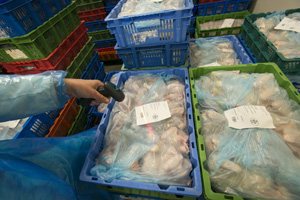WTO rules against India on US chicken ban

The World Trade Organization has ruled against India in its ban on US poultry imports, a move that has been commended by the USA Poultry & Egg Export Council (USAPEEC) and the National Chicken Council (NCC).
India placed a ban on US poultry products in 2007 under the guise of preventing low pathogenic avian influenza (LPAI), but produced no scientific evidence to support the ban’s validity. In response, the Office of the United States Trade Representative (USTR) initiated consultations in 2012, refuting India’s claims that LPAI will mutate into a highly pathogenic form of the virus.
“India’s ban was thinly veiled protectionism,” said USAPEEC President James Sumner and National Chicken Council President Michael Brown. “This ruling should send a signal to India and other countries that have placed similar bans on US poultry that they are inconsistent with WTO rules and with guidelines established by the World Organization for Animal Health (OIE).
“Our industry believes that free and fair trade – particularly with food – should never be used as a political bargaining chip. Indian consumers deserve access to affordable and safe protein, which the US has the ability to provide,” said Sumner and Brown. “We thank former USTR Ron Kirk for initiating the complaint against India, and (current) Ambassador Michael Froman for continuing to pursue the case for a favorable outcome.”
Today’s ruling does not give the US automatic access to India’s market, which is estimated to be approximately 2.6 million metric tons of US poultry annually, and is growing at a rate of 8-10% per year. “We recognise that work remains to open India’s market – but this ruling is an important step toward securing that objective. We hope that the new Indian administration will be amenable to working with the US government and industry to remove all restrictions and allow access for US poultry in the near future,” Sumner and Brown concluded.
Join 31,000+ subscribers
Subscribe to our newsletter to stay updated about all the need-to-know content in the poultry sector, three times a week. Beheer
Beheer











 WP Admin
WP Admin  Bewerk bericht
Bewerk bericht